By Maureen Sharkey/Press Release
The biggest art movement in history is going on now in Chicago, across the nation, and throughout Europe. But their paintings were not found at last weekend’s Art Expo, nor in the Modern Wing of the Art Institute, nor at the Contemporary Museum of Art.
They are artists who paint en plein air (in open air) as did the French Impressionists, who found that they could capture the transient effects of sunlight, and who painted so magnificently that they remain one of the most glorious and beloved of all the artists’ movements throughout history (as well as by far the most expensive). The goal is not to have the work look like these masters, but to see like these masters – in individual independent styles.
The art world’s clash today is “shock and schlock” vs majestic realism. “Beauty in art is dead” has been the mainstay the majority of the 20th century and into the 21st. This is evident in the majority of museums and galleries and art expos across the nation. Shock speaks of the outrageous – the bizarre potential of human imagination. Shock concepts vs. veracity and quality; conceptual spectacle, de-skilling and verbosity vs. the grand manor, idealized aesthetics, and great art as the highest proof of human intelligence and sincerity. Shock value only lasts so long. After all, it isn’t shocking the second time.
The Art Institute takes great pride in its collection of French Impressionist paintings, as it is among the finest outside of France. But have you seen any impressionistic paintings beyond many decades old at the museum?
The French Impressionists said many things about how to paint, as if they felt their discoveries were for posterity. Have we insulted the Impressionists by not considering impressionism a valid art form if done in these modern times?
In the new Modern Wing of the Art Institute, there is some realism, but not without a tinge of the bizarre. The art departments of our great universities scoffed at realism during the latter half of the 20th century and wouldn’t teach it.
Petrified uniformities of our era render us untrue even to ourselves. As great artists always infringe with liberty, perhaps now is the time, in the revelation of conscience, to question our belief systems and put to rest old world ideas; realize that art is more than just a “forging ahead” of genres, a revelation that all genres are “in.” Art moreover is taste. Quality should be always in style. Quality rather than genre. Shouldn’t it come down to quality vs. not quality? And isn’t that attitude Post-Modern?
Expressive realism, on the other hand, is about dedicated individuals developing time-honored and difficult skills. Expressive realism challenges the very core of human sensitivity and capability. It is the long toil, and to render the hand obedient. “There is nothing more difficult or demanding than painting. It calls for a state of physical and mental alertness sustained throughout the session.” (John Howard Sanden)
The processes and techniques give unprecedented joys of accomplishment and personal satisfaction. Realism is not so much concerned with fashion. The results are fine-tuned individuality and style.
Art is majestic and soul-moving, and a reason to live. It is the aesthetics of realistic (representational) paintings that so many love and call their favorites and draw the biggest lines to the Art Institute. The plein air painters’ movement is freed from the tyranny of pedagogy and fashion. Liberated. Because we were all born free, and born liberated.
You may have spotted Chicago’s plein air painters around town, standing in a warm field, painting Chicago’s gracious gardens of sun-kissing roses, or painting the iron bridges, the exploding Chicago River, or the gilded pillars of Chicago’s world-class architecture.
They meet up every Saturday morning at 9 a.m. at a designated location downtown or in city neighborhoods, and paint for three hours.
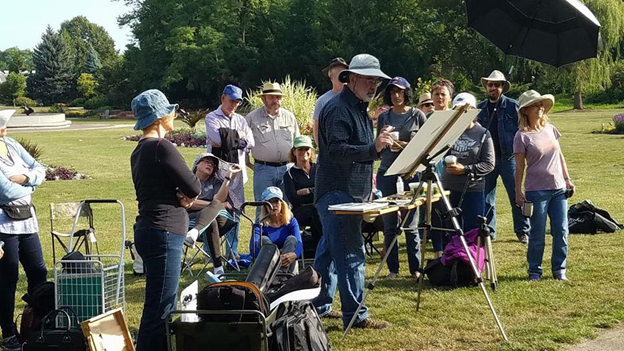 A demonstration in Lincoln Park.
A demonstration in Lincoln Park.
This is usually followed by a critique from a renowned Chicago artist whose hands paint with all the confident draftsmanship of the most disciplined masters – like Errol Jacobson, Steve Puttrich or Nancie King Mertz. These are not teachers; they are awakeners.
Come see their work at the Plein Air Exhibit through September 24th at the Palette & Chisel Academy of Fine Arts, at 1012 North Dearborn. (312 642-4400)
Traditional impressionism, when excellent, is widely admired and collected in a frenzy of mad intoxication. Since most plein air paintings are done quickly, as they are about grasping the essence of the moment, and the play of light, these paintings are less expensive than long-labored paintings. Prices generally range from $100 to $1,200. It’s never too late to be the collector you always wanted to be.
Behold, the door of your soul. Come join the Plein Air Painters of Chicago on Facebook and at PapChicago.com.
“The first quality that is needed is audacity,” Winston Churchill said of painting!
Who knows who may become the glory of this city! The sky has many stars. Come paint with us in a field of warm hospitality. We’ll talk then, as we pack up our supplies and salute the sun.
“I have walked this earth for 30 years, and, out of gratitude, want to leave some souvenir.” (Vincent van Gogh)
*
Webster Street Bridge/Errol Jacobson.
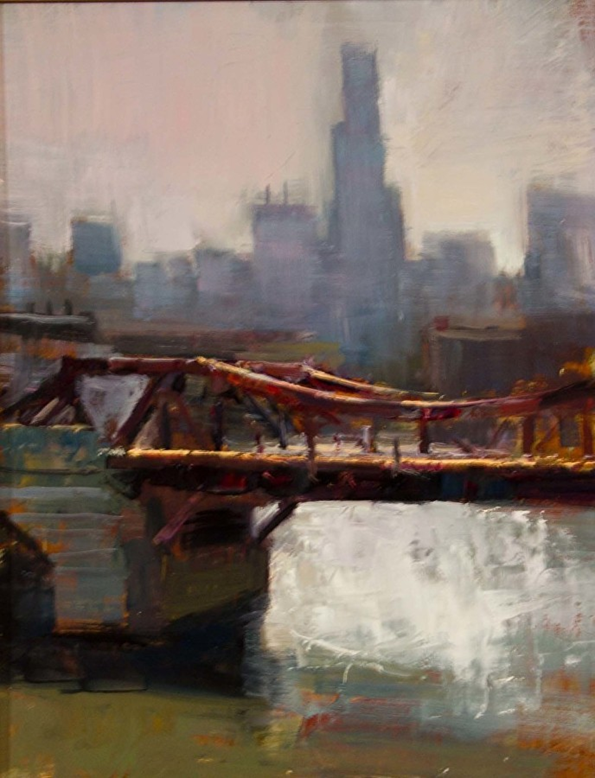
*
Early Commute/Nancie King Mertz.
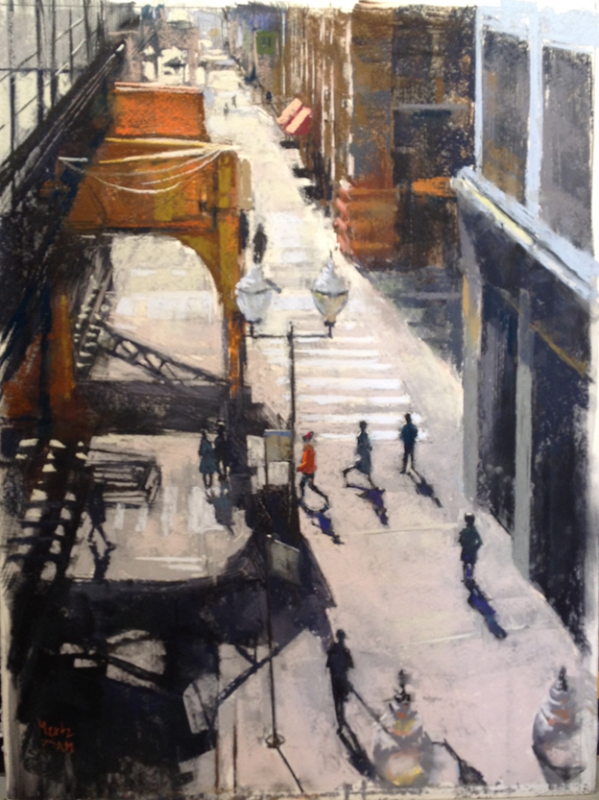
*
Bucktown Cafe/Maureen Sharkey.
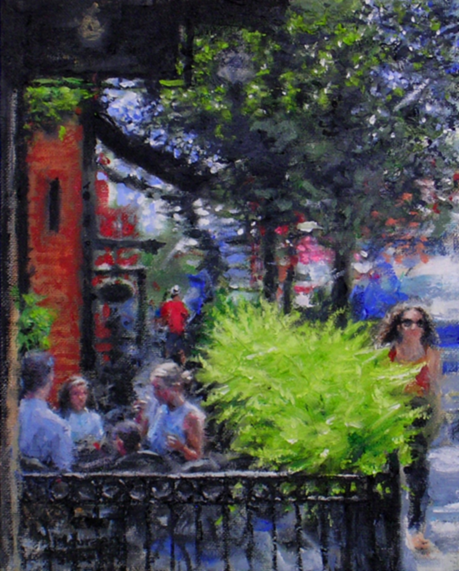
*
Blue Heron in Lincoln Park/Maureen Sharkey.
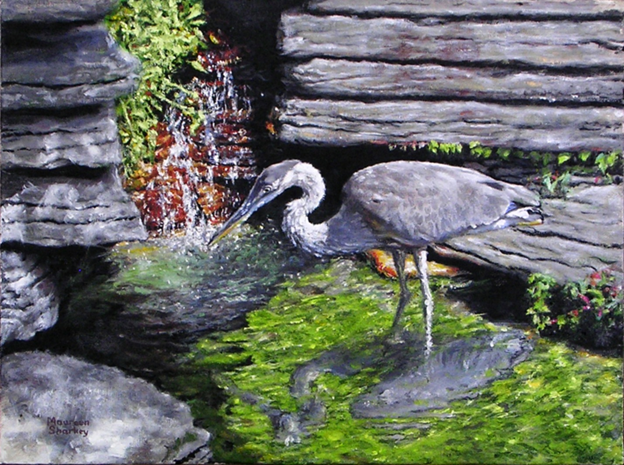
*
Rocky Forest/Steve Puttrich.
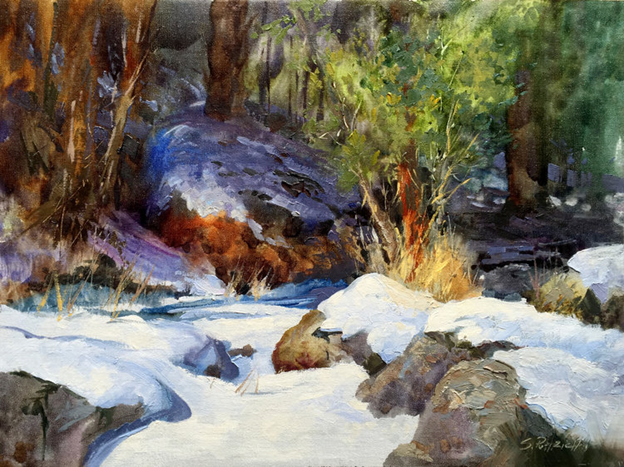
*
Richard Schmid/Winter Home.
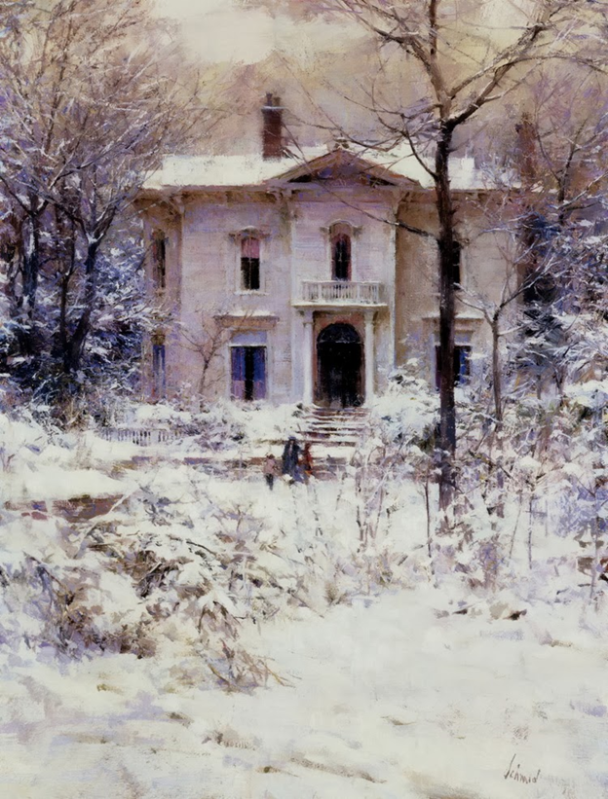
*
Tree/Richard Schmid.
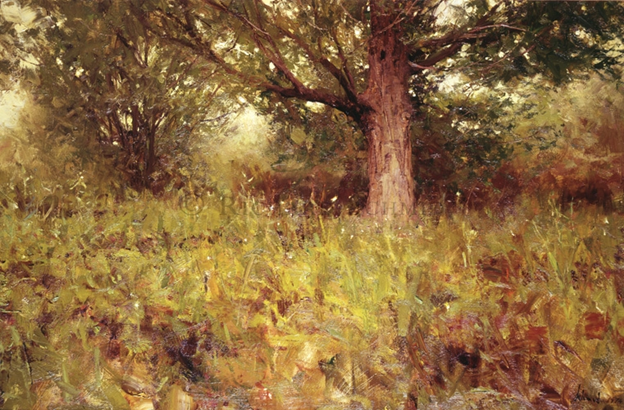
–
Comments welcome.
Posted on September 20, 2017


